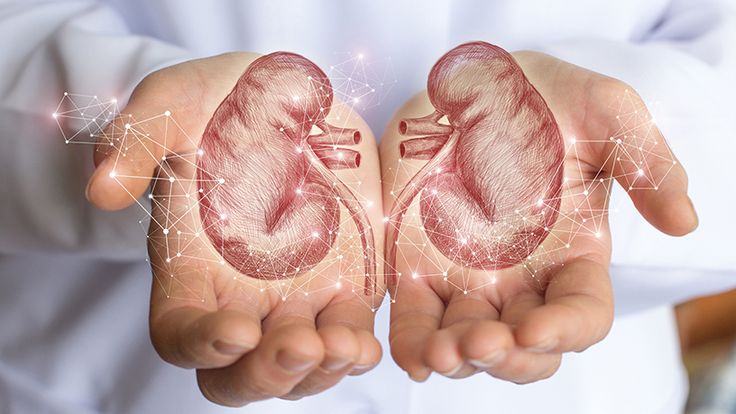
Introduction to Cancer
What is Cancer?
Cancer is a complex group of diseases characterized by abnormal cell growth with the potential to invade or spread to other parts of the body. These abnormal cells can form tumors or interfere with normal body functions. There are over 100 types of cancer, each classified based on the type of cell they originate from.
History of Cancer Research
The history of cancer research dates back to ancient times, with early evidence found in Egyptian manuscripts from around 1600 BCE. The modern era of cancer research began in the 19th century with significant discoveries such as the link between tobacco use and lung cancer. The 20th century witnessed major advancements in understanding the disease, leading to improved diagnostic techniques and treatment options.Today, ongoing research continues to advance our knowledge of cancer biology, leading to more effective therapies and interventions aimed at improving patient outcomes and quality of life. It remains a top priority in the medical field to unravel the complexities of cancer and develop innovative strategies for prevention, early detection, and treatment.
Types of Cancer
Carcinomas and Sarcomas
When exploring the types of cancer, two main categories are carcinomas and sarcomas. Carcinomas develop in the epithelial cells covering the internal and external parts of the body, while sarcomas form in the connective tissues like bone, muscle, or fat. These types of cancer differ in their growth patterns and treatment approaches.
Blood and Lymphatic System Cancers
Another group of cancers affects the blood and lymphatic systems. This category includes leukemia, lymphoma, and myeloma, where cancerous cells are found in the blood or lymph. Each type has unique characteristics and requires specialized treatments tailored to the affected tissues.Understanding the various types of cancer is crucial for accurate diagnosis and tailored treatment plans. Whether it’s carcinoma, sarcoma, or blood-related cancers, early detection and proper management play a vital role in improving outcomes for patients worldwide. Ongoing research and advancements in medical science continue to enhance our understanding of these diseases, bringing hope for better therapies and ultimately a cure.
Causes and Risk Factors
Genetics and Family History
When it comes to understanding the causes and risk factors of cancer, genetics and family history play a significant role. Certain genetic mutations passed down from one generation to another can increase the likelihood of developing certain types of cancer. It is essential to be aware of any family history of cancer to determine if one may be genetically predisposed to the disease.
Environmental Factors
In addition to genetics, environmental factors also contribute to the risk of developing cancer. Exposure to harmful substances such as tobacco smoke, asbestos, ultraviolet radiation, and pollutants in the air or water can increase the chances of cancer developing. Adopting a healthy lifestyle that includes avoiding harmful environmental exposures can help reduce the risk of cancer and promote overall well-being.Understanding the various causes and risk factors associated with cancer is crucial in taking preventive measures and making informed decisions about one’s health. By being aware of these factors, individuals can take steps to lower their risk and prioritize regular screenings and healthy habits for a better chance at prevention and early detection of cancer.
Symptoms and Diagnosis
Common Cancer Symptoms
When it comes to cancer, being aware of common symptoms is crucial for early detection and treatment. Symptoms can vary depending on the type of cancer but may include unexplained weight loss, prolonged fatigue, changes in bowel or bladder habits, a persistent cough, unusual bleeding, and lumps or changes in the skin. It is essential not to ignore any persistent symptoms and to consult a healthcare professional for further evaluation.
Diagnostic Tests and Procedures
Diagnostic tests play a vital role in confirming the presence of cancer and determining its stage. Common diagnostic procedures include imaging tests like X-rays, CT scans, MRIs, and biopsies where a sample of tissue is examined under a microscope. These tests help healthcare providers accurately diagnose cancer, develop a treatment plan, and monitor the progress of the disease. Regular screenings are also important for early detection, especially for individuals with a family history of cancer or other risk factors. By understanding the symptoms and undergoing diagnostic tests, individuals can ensure timely treatment and better outcomes.
Also Read: Understanding Leukaemia: Causes, Symptoms, and Treatment
Cancer Treatment Options
Surgery and Radiation Therapy
After a cancer diagnosis is confirmed through diagnostic tests, patients may explore treatment options. Surgery involves removing the tumor and nearby tissues, aiming to eliminate as much cancer as possible. Radiation therapy uses high-energy rays to destroy cancer cells. Both methods are commonly used to treat different types of cancer, either alone or in combination with other treatments.
Chemotherapy and Immunotherapy
Chemotherapy utilizes drugs to kill cancer cells or stop their growth. It can be administered orally or intravenously and is often used to treat cancer that has spread or cannot be removed through surgery. Immunotherapy, on the other hand, helps the immune system fight cancer. By boosting the body’s natural defenses, immunotherapy can target and destroy cancer cells effectively.Combining these treatments, called multimodal therapy, may be necessary depending on the type and stage of cancer. Each treatment option has its benefits and potential side effects, so it is crucial for patients to work closely with their healthcare team to determine the most suitable approach for their individual case.
